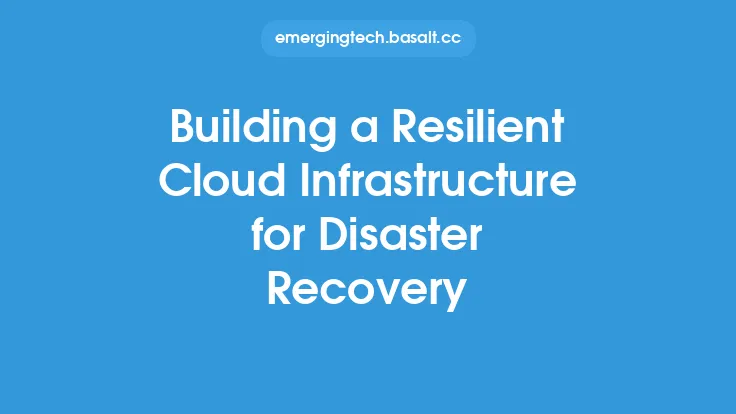As organizations continue to migrate their applications and services to the cloud, building a scalable cloud network has become a critical component of their overall cloud strategy. A scalable cloud network is essential for ensuring that an organization's cloud-based resources can handle increased traffic, data, and user demand without compromising performance or availability. In this article, we will explore the key considerations for building a scalable cloud network, including the importance of scalability, network architecture, security, and management.
Introduction to Scalability
Scalability is the ability of a cloud network to handle increased traffic, data, and user demand without compromising performance or availability. A scalable cloud network can adapt to changing business needs, ensuring that applications and services remain available and responsive to users. There are several factors that contribute to scalability, including network architecture, bandwidth, and resource allocation. By designing a cloud network with scalability in mind, organizations can ensure that their cloud-based resources can handle increased demand without requiring significant upgrades or changes to the underlying infrastructure.
Network Architecture
A well-designed network architecture is critical for building a scalable cloud network. A scalable network architecture should be able to handle increased traffic and data without compromising performance or availability. There are several factors to consider when designing a scalable network architecture, including the use of load balancers, autoscaling, and content delivery networks (CDNs). Load balancers can help distribute traffic across multiple servers, ensuring that no single server becomes overwhelmed and becomes a bottleneck. Autoscaling allows organizations to automatically add or remove resources as needed, ensuring that the network can handle changes in demand. CDNs can help reduce latency and improve performance by caching content at edge locations closer to users.
Security Considerations
Security is a critical component of building a scalable cloud network. As organizations migrate their applications and services to the cloud, they must ensure that their cloud-based resources are secure and protected from unauthorized access. There are several security considerations to keep in mind when building a scalable cloud network, including the use of firewalls, intrusion detection and prevention systems, and encryption. Firewalls can help block unauthorized access to the network, while intrusion detection and prevention systems can help identify and block malicious traffic. Encryption can help protect data in transit and at rest, ensuring that sensitive information remains confidential.
Management and Monitoring
Effective management and monitoring are critical for building a scalable cloud network. Organizations must be able to monitor their cloud-based resources in real-time, identifying potential issues before they become incidents. There are several tools and technologies that can help with management and monitoring, including cloud management platforms, network monitoring tools, and analytics software. Cloud management platforms can help organizations manage their cloud-based resources, including provisioning, deployment, and scaling. Network monitoring tools can help organizations monitor their network traffic, identifying potential issues and bottlenecks. Analytics software can help organizations analyze their network traffic, identifying trends and patterns that can inform future scalability decisions.
Best Practices for Scalability
There are several best practices that organizations can follow to ensure that their cloud network is scalable. These include designing for failure, using automation and orchestration, and implementing continuous monitoring and feedback. Designing for failure involves anticipating potential failures and designing the network to handle them. This can include using redundant systems, failover protocols, and disaster recovery plans. Automation and orchestration can help organizations automate routine tasks, freeing up resources for more strategic initiatives. Continuous monitoring and feedback can help organizations identify potential issues before they become incidents, ensuring that the network remains scalable and performant.
Conclusion
Building a scalable cloud network is a critical component of an organization's overall cloud strategy. By considering factors such as scalability, network architecture, security, and management, organizations can ensure that their cloud-based resources can handle increased traffic, data, and user demand without compromising performance or availability. By following best practices such as designing for failure, using automation and orchestration, and implementing continuous monitoring and feedback, organizations can build a scalable cloud network that meets their business needs and supports their long-term growth and success.





